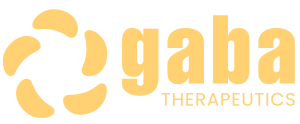
We are a midstage biotechnology company developing novel therapies to dramatically improve the lives of people with psychiatric, neurological and NLRP3 inflammatory disorders.
Derisked Development Program in Anxiety
Our lead compound, GRX-917 is a deuterated analog of an established anxiety medication, with comparable efficacy as leading benzodiazepines, but is non-addictive with minimal side effects. This product profile is superior to all other classes of anxiolytics. GRX-917 has the same mechanism of action, safety and efficacy, but with improved pharmacokinetics.
Decades of clinical use and study data of GRX-917’s precursor profoundly derisks the development of GRX-917 in generalized anxiety disorder (GAD), which will enter pivotal registration trials in 2025.
Management projects GRX-917 approvals in GAD by 2028.
Novel Mechanism of Action
GRX-917 works by inducing the production of endogenous neurosteroids such as allopregnanolone. These increased neurosteroid levels naturally modulate the GABAa receptor, while also inhibiting NLRP3 inflammation by over 90%.
These important mechanisms of action could benefit a broad range of neuropsychiatric, neurological and auto-immune disorders.

A Wholly Owned Pipeline of Validated Indications
GABA Therapeutics is developing GRX-917 for anxiety, but also additional indications, which are supported by this novel mechanism of action, as well as preclinical efficacy data. Additional validated indications include other forms of anxiety, depression, epilepsy, pain and obesity.
